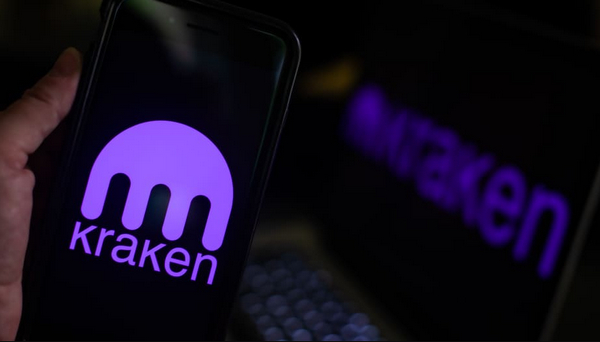-
 Bitcoin
Bitcoin $91,399.6094
4.86% -
 Ethereum
Ethereum $1,704.8681
8.06% -
 Tether USDt
Tether USDt $1.0005
0.05% -
 XRP
XRP $2.1564
3.60% -
 BNB
BNB $607.4562
1.91% -
 Solana
Solana $144.8137
6.06% -
 USDC
USDC $0.9998
0.00% -
 Dogecoin
Dogecoin $0.1730
8.98% -
 TRON
TRON $0.2448
-0.44% -
 Cardano
Cardano $0.6553
5.53% -
 Chainlink
Chainlink $13.8169
5.39% -
 Avalanche
Avalanche $21.6278
8.20% -
 UNUS SED LEO
UNUS SED LEO $9.0426
-1.05% -
 Stellar
Stellar $0.2602
3.01% -
 Sui
Sui $2.4591
11.77% -
 Shiba Inu
Shiba Inu $0.0...01330
7.32% -
 Toncoin
Toncoin $3.0077
3.87% -
 Hedera
Hedera $0.1768
4.48% -
 Bitcoin Cash
Bitcoin Cash $355.0080
3.50% -
 Litecoin
Litecoin $83.1356
6.40% -
 Hyperliquid
Hyperliquid $18.6550
4.13% -
 Polkadot
Polkadot $3.9039
2.01% -
 Dai
Dai $0.9999
0.01% -
 Bitget Token
Bitget Token $4.5079
1.72% -
 Ethena USDe
Ethena USDe $0.9996
0.03% -
 Pi
Pi $0.6406
0.99% -
 Monero
Monero $222.3341
3.54% -
 Pepe
Pepe $0.0...08496
8.99% -
 Uniswap
Uniswap $5.6500
7.25% -
 Aptos
Aptos $5.1191
2.52%
How to play Kraken perpetual contracts
To trade perpetual contracts on Kraken, users must first open an account, complete KYC verification, deposit funds, understand margin trading, select the underlying asset, place an order, monitor positions, and implement sound risk management strategies to mitigate potential losses.
Nov 09, 2024 at 02:51 am

How to Play Kraken Perpetual Contracts: A Comprehensive Guide
Navigating the cryptocurrency market can be a daunting task for newcomers. With its inherent volatility and complex instruments, understanding how to effectively engage in trading can be challenging. One of the most popular trading vehicles in the crypto space is perpetual contracts, which offer traders the opportunity to speculate on the future price of an underlying asset. Among the leading exchanges offering perpetual contracts is Kraken, renowned for its robust platform and diverse product offerings.
This comprehensive guide will provide a step-by-step walkthrough on how to trade perpetual contracts on Kraken, ensuring that traders are well-equipped to navigate the platform and harness the full potential of this innovative instrument.
Step 1: Understanding Perpetual Contracts
Perpetual contracts, also known as perpetual futures or inverse swaps, are a type of derivative financial instrument that allows traders to speculate on the future price of an underlying asset, such as Bitcoin or Ethereum, without the need for physical delivery. Unlike traditional futures contracts, perpetual contracts do not have a fixed expiration date and can be held indefinitely, providing traders with extended market exposure. The key difference between perpetual contracts and spot trading lies in the settlement mechanism. Spot trading involves the immediate exchange of assets, while perpetual contracts are settled in cash, with traders receiving or paying the difference between the opening and closing prices.
Step 2: Opening an Account on Kraken
To begin trading perpetual contracts on Kraken, traders need to open an account on the exchange. The registration process is straightforward and requires providing basic personal information, such as name, email address, and date of birth. After account creation, users will be prompted to complete KYC (Know Your Customer) verification, which involves submitting government-issued identification documents to confirm their identity and residency. Verification is essential for accessing the full range of Kraken's services, including perpetual contract trading.
Step 3: Funding the Account
Before trading perpetual contracts, traders need to deposit funds into their Kraken account. The exchange supports a wide range of deposit methods, including bank wire transfers, credit and debit cards, and cryptocurrency transfers. Deposit fees vary depending on the chosen method, and it's recommended to check the Kraken website for the latest fee schedule. Once funds are deposited, they can be used for perpetual contract trading.
Step 4: Understanding Margin Trading
Margin trading is a powerful feature that allows traders to amplify their trading capital by borrowing funds from the exchange. This enables traders to control a larger position size than their account balance would normally allow. However, it's important to note that margin trading comes with increased risk as traders are responsible for any losses incurred on borrowed funds. Kraken offers a flexible margin system, allowing traders to adjust their leverage ratio based on their risk tolerance. It's crucial to use margin cautiously and understand the potential risks involved.
Step 5: Selecting the Underlying Asset
Kraken offers perpetual contracts on a range of underlying assets, including major cryptocurrencies like Bitcoin and Ethereum, as well as altcoins and indices. Traders should carefully consider their investment strategy and choose an underlying asset that aligns with their trading goals and risk appetite. Each asset may have different market dynamics, volatility characteristics, and liquidity conditions, influencing the profitability and risk associated with each trade.
Step 6: Placing an Order
Kraken provides a user-friendly trading interface that simplifies the order placement process. Traders can choose between market orders, which are executed at the current market price, or limit orders, which are executed only when the market price reaches a specified level. Advanced traders can also employ stop-loss orders to manage risk and protect their positions from significant losses.
Step 7: Monitoring Positions
Once an order is placed, traders can monitor their position in real-time through the Kraken dashboard. The dashboard provides detailed information about the position's entry price, current price, profit/loss, and margin utilization. Traders can also modify or close their positions as market conditions evolve. Effective position monitoring is essential for managing risk and maximizing trading outcomes.
Step 8: Managing Risk
Risk management is a critical aspect of successful perpetual contract trading. Traders should implement strategies to mitigate potential losses and protect their capital. This includes setting appropriate leverage levels, placing stop-loss orders, and diversifying their portfolio across multiple assets. It's important to remember that perpetual contracts are inherently risky, and traders should trade only with capital they can afford to lose.
Disclaimer:info@kdj.com
The information provided is not trading advice. kdj.com does not assume any responsibility for any investments made based on the information provided in this article. Cryptocurrencies are highly volatile and it is highly recommended that you invest with caution after thorough research!
If you believe that the content used on this website infringes your copyright, please contact us immediately (info@kdj.com) and we will delete it promptly.
- Pi Network's native cryptocurrency, PI, is gaining traction once more after a significant price drop.
- 2025-04-23 05:05:12
- Unicoin Has Rebuffed the U.S. Securities and Exchange Commission's (SEC) Attempt to Negotiate a Settlement Agreement
- 2025-04-23 05:05:12
- Mantra (OM) Founder and CEO Mullin Announces Plan to Burn His Personal Allocation of 150 Million OM Tokens
- 2025-04-23 05:00:12
- Autonomous AI Agents Could Create Their Own Crypto-Monetary Hegemony
- 2025-04-23 05:00:12
- What Happened to Shares of Coinbase (COIN) Jumped 10.3%?
- 2025-04-23 04:55:12
- Best sweeps casino mobile apps + promo codes for new users
- 2025-04-23 04:55:12
Related knowledge

How does Tail Protection reduce the loss of liquidation?
Apr 11,2025 at 01:50am
Introduction to Tail Protection in CryptocurrencyTail Protection is a mechanism designed to mitigate the risks associated with liquidation in cryptocurrency trading. Liquidation occurs when a trader's position is forcibly closed by the exchange due to insufficient margin to cover potential losses. This often happens in leveraged trading, where traders b...

What are the consequences of an imbalance in the long-short ratio?
Apr 13,2025 at 02:50pm
The long-short ratio is a critical metric in the cryptocurrency trading world, reflecting the balance between bullish and bearish sentiments among traders. An imbalance in this ratio can have significant consequences on the market dynamics, affecting everything from price volatility to trading strategies. Understanding these consequences is essential fo...

How to judge the market trend by the position volume?
Apr 11,2025 at 02:29pm
Understanding how to judge the market trend by position volume is crucial for any cryptocurrency trader. Position volume, which refers to the total number of open positions in a particular cryptocurrency, can provide valuable insights into market sentiment and potential price movements. By analyzing this data, traders can make more informed decisions ab...

Why does a perpetual contract have no expiration date?
Apr 09,2025 at 08:43pm
Perpetual contracts, also known as perpetual futures or perpetual swaps, are a type of derivative product that has gained significant popularity in the cryptocurrency market. Unlike traditional futures contracts, which have a fixed expiration date, perpetual contracts do not expire. This unique feature raises the question: why does a perpetual contract ...

Why is the full-position mode riskier than the position-by-position mode?
Apr 13,2025 at 03:42pm
Why is the Full-Position Mode Riskier Than the Position-by-Position Mode? In the world of cryptocurrency trading, the choice between full-position mode and position-by-position mode can significantly impact the risk profile of a trader's portfolio. Understanding the differences between these two modes is crucial for making informed trading decisions. Th...

How is the liquidation price calculated?
Apr 12,2025 at 01:35am
Introduction to Liquidation PriceLiquidation price is a critical concept in the world of cryptocurrency trading, particularly when dealing with leveraged positions. Understanding how this price is calculated is essential for traders to manage their risk effectively. The liquidation price is the point at which a trader's position is forcibly closed by th...

How does Tail Protection reduce the loss of liquidation?
Apr 11,2025 at 01:50am
Introduction to Tail Protection in CryptocurrencyTail Protection is a mechanism designed to mitigate the risks associated with liquidation in cryptocurrency trading. Liquidation occurs when a trader's position is forcibly closed by the exchange due to insufficient margin to cover potential losses. This often happens in leveraged trading, where traders b...

What are the consequences of an imbalance in the long-short ratio?
Apr 13,2025 at 02:50pm
The long-short ratio is a critical metric in the cryptocurrency trading world, reflecting the balance between bullish and bearish sentiments among traders. An imbalance in this ratio can have significant consequences on the market dynamics, affecting everything from price volatility to trading strategies. Understanding these consequences is essential fo...

How to judge the market trend by the position volume?
Apr 11,2025 at 02:29pm
Understanding how to judge the market trend by position volume is crucial for any cryptocurrency trader. Position volume, which refers to the total number of open positions in a particular cryptocurrency, can provide valuable insights into market sentiment and potential price movements. By analyzing this data, traders can make more informed decisions ab...

Why does a perpetual contract have no expiration date?
Apr 09,2025 at 08:43pm
Perpetual contracts, also known as perpetual futures or perpetual swaps, are a type of derivative product that has gained significant popularity in the cryptocurrency market. Unlike traditional futures contracts, which have a fixed expiration date, perpetual contracts do not expire. This unique feature raises the question: why does a perpetual contract ...

Why is the full-position mode riskier than the position-by-position mode?
Apr 13,2025 at 03:42pm
Why is the Full-Position Mode Riskier Than the Position-by-Position Mode? In the world of cryptocurrency trading, the choice between full-position mode and position-by-position mode can significantly impact the risk profile of a trader's portfolio. Understanding the differences between these two modes is crucial for making informed trading decisions. Th...

How is the liquidation price calculated?
Apr 12,2025 at 01:35am
Introduction to Liquidation PriceLiquidation price is a critical concept in the world of cryptocurrency trading, particularly when dealing with leveraged positions. Understanding how this price is calculated is essential for traders to manage their risk effectively. The liquidation price is the point at which a trader's position is forcibly closed by th...
See all articles























































































